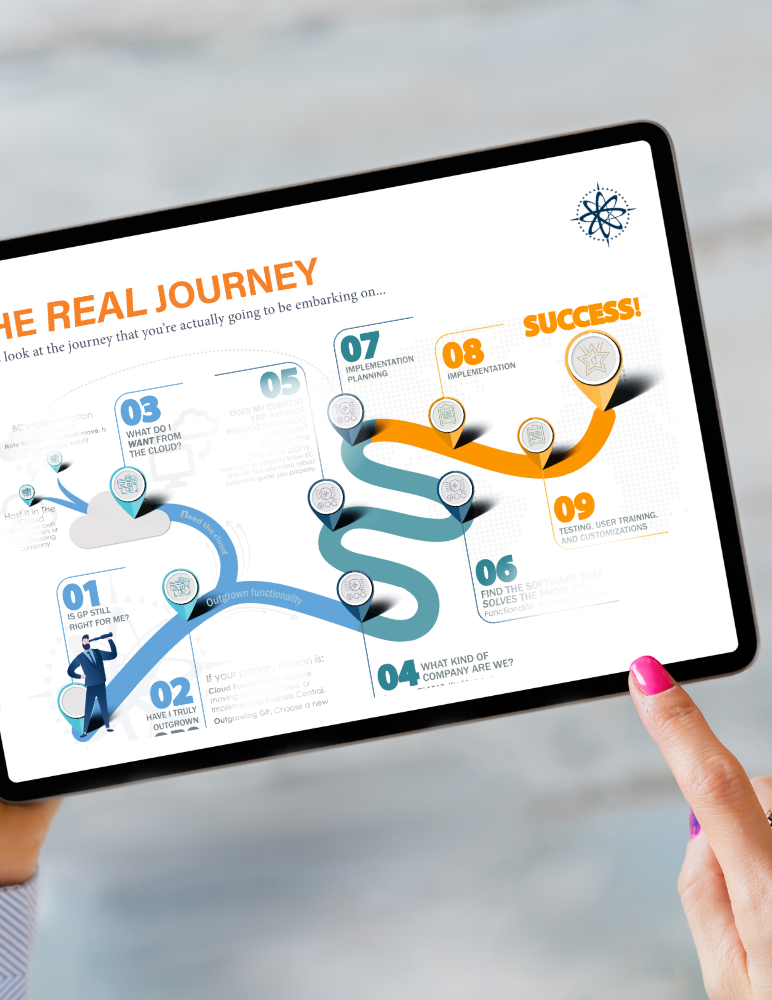ERP Implementations Reimagined - Part 4 - The Power of Insite
The Power of Insite

In previous blogs, we introduced the concept of Shadow ERP and explored how core ERP functions are often supplanted by ancillary software and manual methods that undermine efficiency and process transparency. We then dug into the concept of the Shadow ERP ratio as a way to benchmark ERP adoption and value based on appropriate ERP usage and Shadow ERP-supported processes.
In this blog, we’ll explore a reporting tool used by Pelorus to transform the concept of the Shadow ERP ratio into actionable insights. Not coincidentally, the specific reporting application we’ll discuss is called Insite, developed by HandsFree.
Why Measure ERP/Shadow ERP Adoption?
The motivation behind developing the Shadow ERP concept and the Shadow ERP Ratio was to establish a new set of tools to evaluate the health of ERP implementations. The data gathered to evaluate the level of fitness of an ERP platform can then be used to dramatically improve ERP software selection, implementations or upgrades to a new system.
Think of this in the context of how ERP software has been upgraded or migrated forever. There have been no significant changes in how upgrades or migrations are processed, despite major changes in technology and user behavior. Simultaneously, challenged or failed ERP upgrade and migration projects are at record levels.
The team at Pelorus is dedicated to addressing the epidemic of failed and challenged ERP projects by applying new tools, processes, and attitudes to our projects. High on this list is the measurement of Shadow ERP and the Shadow ERP Ratio to improve the base of data needed for improving the success of ERP upgrades and migrations.
While the Shadow ERP data and ratio adds a critical \new element for analysis to improve ERP upgrades and migrations, it is difficult to catalog manually and impossible to monitor in real-time. How can we overcome these issues?
The Right Reporting Tools for the Right Job
Pelorus uses a reporting application from HandsFree called Insite to catalog Shadow ERP components and quickly analyze them by:
- Function
- Individual
- Department
- Location
- Process flow
The ability to monitor the Shadow ERP Ratio in real-time highlights potential problem areas as they arise.
Erik Cornet, the President of Pelorus, notes that “we are now capturing data in real-time that other partners try to surface with lengthy, cumbersome questionnaires that take weeks and months to complete and that the least experienced consultants typically administer.”
“This manual process is time-consuming, expensive, and it misses a significant number of Shadow ERP elements,” Cornet adds. “With Insite, we are replacing a tricycle with a Ferrari, which fits perfectly into our vision of speed to value.”
Measure What You Manage
In reality, even an implementation that runs over budget and over schedule can be successful, if the FINAL measure of success, adoption, is achieved. But measuring adoption and user behavior can be a real pain.
Suppose your company is contemplating an ERP upgrade or migration. Once the software is functional and users are trained, the real work begins. Those first few days, weeks and months when the ERP functions are owned by the users “in the wild” are always the most critical when it comes to measuring the success of the implementation. Without the proper tools, measuring adoption and the effectiveness of that adoption can be a huge challenge. The classic way to handle this is user interviews and the old “stop watch” technique of monitoring tasks, timing the task, and cataloging the tools used and process dependencies. But all too often, that work begins…and then stops right at the critical point when users tend to stray. By “stray” we mean that they use the tools they're given until no one is looking, and then procedures and processes begin to go off the rails. Work-arounds are invented. Shiny new Web app trials start to pop up, and of course, out come the spreadsheets.
User adoption, behavior diagnostic, and reporting tools like Insite do that work for you. It monitors usage of the ERP, down to specific forms and screens, along with all the Shadow ERP elements we’ve discussed. When it comes to desktop applications like Excel, it gets down to the specific Excel spreadsheets and workbooks users opt to use instead. All in a way that is private and secure.
Imagine what you can discover with that kind of usage data in hand. All of a sudden, the Shadow ERP ratio becomes less of a static metric, and more like a dynamic monitor of user behavior across the enterprise. Which tools people use. Which ones they don’t. In real time. Where that matters most is when you make changes like an ERP upgrade or wholesale migration. One of the scenarios it helps avoid is that one year anniversary date AFTER your implementation/upgrade when everyone assumes the system is working fine…but in reality, no one is using the right tools to their full effect. Over time, as new Shadow ERP elements creep in, the problem is compounded to the point where neither IT nor departmental or executive leadership has any idea what’s going on.
With tools like Insite, and an intentional process for guiding and supporting effective user behavior, your whole IT infrastructure and user behavior comes out of the shadows.
Get Out of the Sure Step Trap and Escape the Shadows
You owe it to yourself to evaluate the advanced processes, tools, and attitude that the Pelorus team can bring to your critical project. Contact us today to discover how you can make the most of the tools and technologies you have today to make your workers more productive and effective.
Pelorus Technology is a global Microsoft Dynamics Enterprise Resource Planning (ERP) implementation partner. The Pelorus Partners believe that the Microsoft Technology stack and Dynamics products afford customers the most reasonably priced and functionally complete ERP platform in the market. Our team is dedicated to identifying and implementing new and improved methodologies, attitudes, and tools to set a new standard in speed to value for our ERP selection, implementation, and upgrade projects. Contact us today to see how our Pelorus advanced thinking can benefit your ERP project.

Pelorus Technology is a Global Microsoft Implementation Partner delivering on the vision of the Microsoft Technology Stack. Global reach with a local touch.
All Rights Reserved | Pelorus Technology











